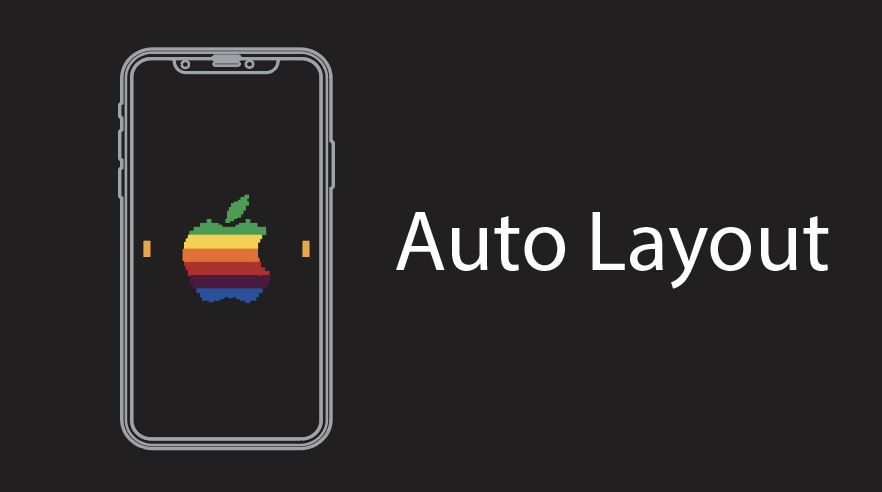I wrote an earlier post about multi-line labels but I wanted something more distilled. Here are some condensed notes on how to do multi-line lables with xibs.
1. Set label to multi-line.

2. Set your UILabel struts and springs.

3. Calculate label height.
+ (CGFloat)heightForLabelWithString:(NSString *)pString andWidth:(CGFloat)pWidth
{
CGSize labelSize = [pString sizeWithFont:[UIFont fontWithName:@"HelveticaNeue" size:14.5f] constrainedToSize:CGSizeMake(pWidth, MAXFLOAT) lineBreakMode:UILineBreakModeWordWrap];
return labelSize.height;
}
4. Redraw label based on height.
CGFloat bodyHeight = [CustomCell heightForLabelWithString:text.body andWidth:290];
self.bodyLabel.frame = CGRectMake(self.bodyLabel.frame.origin.x, self.bodyLabel.frame.origin.y, self.bodyLabel.frame.size.width, bodyHeight);
self.frame = CGRectMake(self.frame.origin.x, self.frame.origin.y, self.frame.size.width, self.bodyLabel.frame.origin.y + self.bodyLabel.frame.size.height + 10);
Bring it all together in code
CustomCell.h
#import <UIKit/UIKit.h> #import "NSString.h" @interface CustomCell : UITableViewCell @property (strong, nonatomic) IBOutlet UILabel *bodyLabel; + (NSString *)reuseIdentifier; - (void)populate:(NSString *)text; + (CGFloat)heightForText:(NSString *)text; @end
CustomCell.m
#import "CustomCell.h"
#import "UITableViewCell+Utils.h"
#define kYOrigin 10
@implementation CustomCell
@synthesize bodyLabel = _bodyLabel;
- (id)initWithStyle:(UITableViewCellStyle)style reuseIdentifier:(NSString *)reuseIdentifier
{
self = [super initWithStyle:style reuseIdentifier:reuseIdentifier];
if (self) {
// Initialization code
}
return self;
}
- (void)populate:(NSString *)text
{
self.bodyLabel.text = text;
CGFloat bodyHeight = [CustomCell heightForLabelWithString:text andWidth:290];
self.bodyLabel.frame = CGRectMake(self.bodyLabel.frame.origin.x, self.bodyLabel.frame.origin.y, self.bodyLabel.frame.size.width, bodyHeight);
self.frame = CGRectMake(self.frame.origin.x, self.frame.origin.y, self.frame.size.width, self.bodyLabel.frame.origin.y + self.bodyLabel.frame.size.height + 10); //10 for padding
}
+ (CGFloat)heightForText:(NSString *)text
{
CGFloat bodyHeight = [self heightForLabelWithString:text andWidth:290];
return kYOrigin + bodyHeight + 10;
}
+ (NSString *)reuseIdentifier
{
return @"CustomCellIdentifier";
}
@end
MyViewController.m
- (CGFloat)tableView:(UITableView *)tableView heightForRowAtIndexPath:(NSIndexPath *)indexPath
{
return [CustomCell heightForText:text];
}
- (UITableViewCell *)tableView:(UITableView *)tableView cellForRowAtIndexPath:(NSIndexPath *)indexPath {
CustomCell *cell = (CustomCell *)[tableView dequeueReusableCellWithIdentifier:[CustomCell reuseIdentifier]];
if (cell == nil) {
[[NSBundle mainBundle] loadNibNamed:@"CustomCell" owner:self options:nil];
cell = _textSectionCell;
_textSectionCell = nil;
}
[cell populate:@”some really long multi-line body of text ...”];
return cell;
}
UITableViewCell+Utils.h (category)
#import "UITableViewCell+Utils.h"
@implementation UITableViewCell (Utils)
+ (CGFloat)heightForLabelWithString:(NSString *)pString
{
CGSize labelSize = [pString sizeWithFont:[UIFont fontWithName:@"HelveticaNeue" size:14.5f] constrainedToSize:CGSizeMake(kDefaultLabelWidth, MAXFLOAT) lineBreakMode:UILineBreakModeWordWrap];
return labelSize.height;
}
+ (CGFloat)heightForLabelWithString:(NSString *)pString andWidth:(CGFloat)pWidth
{
CGSize labelSize = [pString sizeWithFont:[UIFont fontWithName:@"HelveticaNeue" size:14.5f] constrainedToSize:CGSizeMake(pWidth, MAXFLOAT) lineBreakMode:UILineBreakModeWordWrap];
return labelSize.height;
}
@end
































